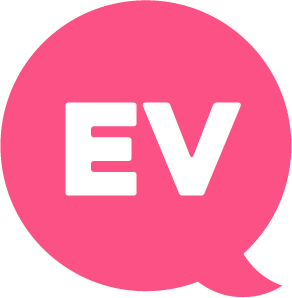EV Blog
Evan Carlson | July 18, 2019
Going Beyond the ESS Portal to Optimize Employee Onboarding
Employee self-service is not a new concept, and throughout the years it has certainly evolved. Today, employees have access to tools, such as self-service portals, where they can find all the information they need. This is not only favorable for existing employees but can also be beneficial for HR, facilities, finance, and new hires during the onboarding process.
The onboarding process is the first impression employees get when starting with a new company. Forbes explains that according to The Bureau of National Affairs, “U.S. businesses lose $11 billion annually due to employee turnover”—and part of this is due to poor onboarding experiences.
So how can HR package the full employee onboarding experience for the benefit of all and keep up with it as it inevitably changes?
The key is to focus on the ROI model: immediate and ongoing ticket deflection for common ongoing training. This can help reduce onboarding time, improve employee training and streamline HR processes by eliminating excessive email communication.
Getting Started with the Employee Self-Service Portal (ESS)
Before implementing or building upon any sort of onboarding tool, HR first needs to understand what type of knowledge and information they need to provide new employees. In order to do so IT, HR, and all departments involved should learn more about:
- What the different roles in the organization need from beginning to end of the onboarding process
- What should be included in the initial training compared to what needs to be added for future reminders
But understanding your employees’ needs and having the right information for them is not enough.
Stepping Beyond your Knowledge Base
Many organizations already offering an employee self-service portal to complement the onboarding process. However, although employees may still use them, the experience of today’s self-service portals doesn’t make the cut for what employees might expect or need. In other words, IT and HR should avoid having just one dedicated place for all employee information.
That is why organizations should go beyond only having an employee self-service portal, but rather a self-service experience that can be accessible wherever an employee works. This omnichannel approach may include the use of virtual assistants, chatbots, platforms like Microsoft Office 365 (Teams, SharePoint, etc.), Salesforce, ITSM tools, and, of course, self-service portals. The first step in delivering the right onboarding experience is to build the knowledge and syndicate it everywhere!
In order to achieve this, you will need to provide tools for your employees that enhance and integrate with your existing onboarding software. Below are four questions to ask yourself when building a more integrated employee onboarding experience.
- Is your knowledge interactive and user-friendly?
Using virtual assistant or chatbots, for example, can personalize the employee experience by guiding new hires through onboarding training and company policies or asking for employee feedback on procedures. With the right tools, you can also build interactive knowledge experiences that help deliver knowledge in digestible bites, video, and other formats new employees can engage with.
- Are your tools able to automate processes?
Most importantly, are your tools capable of helping new employees beyond the first day? What if an employee is only permitted to participate in their 401K three months after their start date? Automating reminders and tasks through your knowledge solution, whether it is a portal or SharePoint, could improve employee experience and increase retention. Using self-help technology, for example, can simplify processes through automation. - Is your knowledge accessible from anywhere?
Provide omnichannel experiences. It doesn’t matter how good your knowledge is or how many amazing video tutorials you have, if newly-hired employees don’t know it exists and can’t access it at any time, it is useless. For instance, when a new employee needs to go through Salesforce training on integrating SharePoint files, they should be able to access the knowledge directly in Salesforce, Microsoft Teams via chatbot, or wherever they are working in the moment. - Are your tools capable of integrating with employee platforms?
Omnichannel experiences are not limited to how many internal channels you have, but how many tools you could integrate with your knowledge to expand reach. When new employees are able to access platforms such as Microsoft Teams or Salesforce it can motivate new employees to get through the onboarding process quicker because it is available wherever the employee works.
Final Take
Make sure IT and HR first focus on researching and understanding what new employees will need through the onboarding process and what type of knowledge needs to be developed or updated. How this knowledge is delivered will also be key when enhancing the employee experience. Lastly, being able to access knowledge independent of having to reach out to staff will ensure quick results and faster ramp up.
The onboarding experience makes a difference when it comes to reducing turnover rates, decreasing training time, increasing productivity and employee satisfaction, and lessening the burden on support.
Subscribe to Email Updates
Evan Carlson
Evan Carlson joined EasyVista in 2010 as the first employee in North America. He is currently the Chief Revenue Officer responsible for revenue growth and profitability across marketing, sales, services, support and customer success. Carlson previously served as VP of Sales at EasyVista to establish and grow the business with empowered teams, innovative sales strategies, and long-term customer relationships. Before EasyVista, Carlson held leadership roles for technology vendors including OPNET, Optinuity (acquired by CA Technologies), and Visual Networks (acquired by Danaher Corporation).




